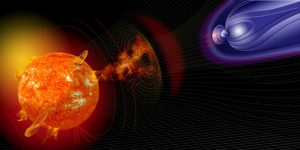Development of new observational approaches for the forecasting of solar extreme events

In questo contesto intendiamo sfruttare il Catania Solar Telescope, le missioni spaziali solari presenti e future in cui è coinvolto il personale INAF-OACT (Metis@Solar Orbiter, EUVST@Solar C, Muse) e gli strumenti ad alta risoluzione per telescopi da Terra (EST, IBIS2.0@VTT).
Durante il progetto, il borsista imparerà ad applicare alcune delle procedure già esistenti e particolarmente promettenti per la misurazione dei campi magnetici solari e l’estrapolazione delle loro configurazioni adatte all’immagazzinamento e rilascio di energia in tali enormi eruzioni. Il dottorato sarà inoltre dedicato a perfezionare tali procedure e a sviluppare nuovi algoritmi da applicare ai dati acquisiti dai futuri strumenti in via di svilupo. Intendiamo fornire nuovi vincoli osservativi e teorici per gli studi pratici sulla meteorologia spaziale. I risultati relativi agli eventi rari estremamente intensi saranno pubblicati sulle principali riviste del settore e presentati alle principali conferenze internazionali dedicate alla fisica solare e ai temi dello SpaceWeather.

In this context, we plan to exploit the Catania Solar Telescope, the present and future solar space missions where the INAF-OACT personnel is involved (Metis@Solar Orbiter, EUVST@Solar C, Muse) and the high-resolution instruments for ground based telescopes (EST, IBIS2.0@VTT).
During the project, the fellow will learn how to apply some of the already existing and promising procedures for the measurement of the solar magnetic fields and the extrapolations of their configurations suitable to storage and delivery energy in such huge eruptions. The PhD will be also dedicated to refine those procedures and to develop new algorithms to be applied to data taken by the upcoming instruments. We plan to provide new observational constraints and theoretical bounds for the practical Space Weather studies. The results related to the extremely strong rare events will be published in the major peer-reviewed journals of the sector and presented at the main international conferences dedicated to solar physics and Space Weather topics.
AREA DI RICERCA: Fisica Solare
PREREQUISITI: È richiesta una buona conoscenza della lingua inglese e di alcuni linguaggi di programmazione
Altre informazioni
Alcune informazioni sugli argomenti del progetto e sugli strumenti a Terra e nello Spazio che saranno utilizzati sono disponibili ai seguenti link:
Articoli scientifici correlati
- Homologous White Light Solar Flares Driven by Photospheric Shear Motions (Romano et al. 2018)
- Two strong white-light solar flares in AR NOAA 12673 as potential clues for stellar superflares (Romano et al. 2019)
- On the Evolution of a Sub-C Class Flare: A Showcase for the Capabilities of the Revamped Catania Solar Telescope (Romano et al. 2022)